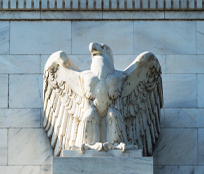The annual Jackson Hole Symposium can be a significant event for policymakers and investors. The keynote speech by the Chair of the Federal Reserve (Fed) is often the highlight. In years past the Chair’s speech has been used to foreshadow significant turns in monetary policy. One notable example was Chair Ben Bernanke’s speech in 2012. In that speech Bernanke previewed the QE3 program that was announced a few weeks later. Chair Jerome Powell has similarly used the stage at Jackson Hole to make big announcements or to advance forceful arguments. Chair Powell used his Jackson Hole speech in 2020 to announce a new framework for monetary policy, and he used his speech in 2021 to make a strong case for the Fed’s outlook for inflation. (As an aside, speeches by other symposium participants can matter as well. Mario Draghi stole the limelight in 2014 with a speech that laid the groundwork for the European Central Bank’s sovereign bond purchases, which were formally announced a few months later.)
Given the history, it was understandable that some anticipated an important or impactful speech from Powell today. Those expectations were disappointed, however, as Powell gave a straightforward speech that broke no new ground. Powell’s speech contained no mention of frameworks, old or new, and mostly avoided discussing anything contentious, like the causes of inflation or the longer-run outlook. Instead of dealing with those big topics, which if they had been addressed could have mattered for the Fed outlook, Powell simply reiterated things that are well known: inflation is unacceptably high and the Fed will act with resolve to bring inflation down. These themes have been featured in every set of remarks that Powell has given this year. Powell’s repetition of them today added little to the outlook.
While there was little newsworthy in Powell’s speech, comments from other Fed officials attending the symposium did provide some glimpse of what is to come for monetary policy. In particular, while all Fed officials agreed that the next hike could be either 50 or 75 basis points, a number of officials hinted at a desire to reduce the pace of hikes eventually. Another point of emerging consensus is that the rate cycle will likely have an extended pause, in which the fed funds rate is maintained in restrictive territory. Importantly, Fed officials seem to prefer a strategy of maintaining rates in restrictive territory, and by doing so allowing inflation to decline gradually, rather than the alternative of raising rates continually until inflation falls back to 2%. These two things, then, are the next steps for policymakers: first, a downshift in the pace of rate hikes and then, second, an extended pause once rates are in restrictive territory.
To be sure, the other Fed officials were just as adamant as Powell in stating their resolution to fight inflation. Nonetheless, it is notable that next steps being previewed lean in the dovish direction (or, at least, the next steps would be a scaling back of the previous hawkishness). This is a significant change from where the same officials were a few months ago. While the last few months have been characterized by Fed officials increasing their hawkishness and accompanying that with bigger-than-expected hikes, the coming few months may be defined by a downshift in the pace of hikes and then, eventually, by a pause in the hiking cycle. All of these officials emphasized that the exact timing of these next steps would be determined by the economic data. This is nothing new, of course, as monetary policy is almost always dependent on the economic data. The emphasis on the data takes on a bit more significance when the Fed Chair’s remarks do not break new ground, as was the case today.



